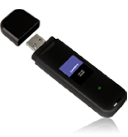It’s quite clear from the poll (included below) that the vast majority of Nortel customers were originally very content to take a “wait and see” approach to the bankruptcy filing. I created that poll on January 15, 2009. It’s now March 29, 2009 more than 90 days later and I get the impression that a lot of folks are really scratching their heads. I would almost be curious to see how many folks have changed their mind in the last 90+ days.
[poll id=”4″ type=”result”]
There are all sorts of rumors around the street these days… everything from a sale to a complete divestiture of the company and it’s assets. While it appears that it’s still business as usual at Nortel (product is readily available, new software releases are being released, support is still responsive) you have to wonder what’s going on and what the end game might look like.
I’ve personally had Brocade (Foundry), Cisco, HP, and Juniper in to discuss their enterprise product offers around LAN/WAN routing/switching. We have quite a few small and large projects that are literally in limbo and I’m not sure how much more uncertainty we (I) as a customer can withstand. I’m curious to what people think today about Nortel?
[poll id=”5″]
I’m interested in hearing your comments and/or thoughts?
Cheers!
 have been pairing them with USB adapters for the past year and a half (saves on having to purchase the chassis expansion kit and the PCI card).
have been pairing them with USB adapters for the past year and a half (saves on having to purchase the chassis expansion kit and the PCI card). (WUSB600N) Wireless-N USB Network Adapter with Dual-Band. We decided to simplify our testing environment by removing the Windows XP Embedded (Thin Client) and test on a simple Windows XP SP2 laptop. We also removed the authentication (802.1x) and encryption (WPA/TKIP) and just test using an open network. We quickly noticed that the problem was not only evident at the 2.4Ghz frequency (802.11b/g) but also evident at the 5 Ghz frequency (802.11a). The big surprise came we noticed that the Linksys behaved exactly like the D-Link in that it would not roam which would lead to poor connectivity. We started to peel back the onion and almost immediately found that both products were based on the Ralink Technologies chipset (RT-2870).
(WUSB600N) Wireless-N USB Network Adapter with Dual-Band. We decided to simplify our testing environment by removing the Windows XP Embedded (Thin Client) and test on a simple Windows XP SP2 laptop. We also removed the authentication (802.1x) and encryption (WPA/TKIP) and just test using an open network. We quickly noticed that the problem was not only evident at the 2.4Ghz frequency (802.11b/g) but also evident at the 5 Ghz frequency (802.11a). The big surprise came we noticed that the Linksys behaved exactly like the D-Link in that it would not roam which would lead to poor connectivity. We started to peel back the onion and almost immediately found that both products were based on the Ralink Technologies chipset (RT-2870).